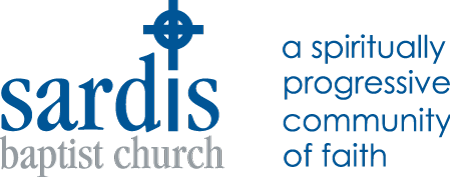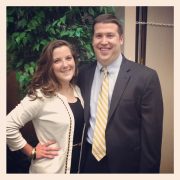For The Living of These Days
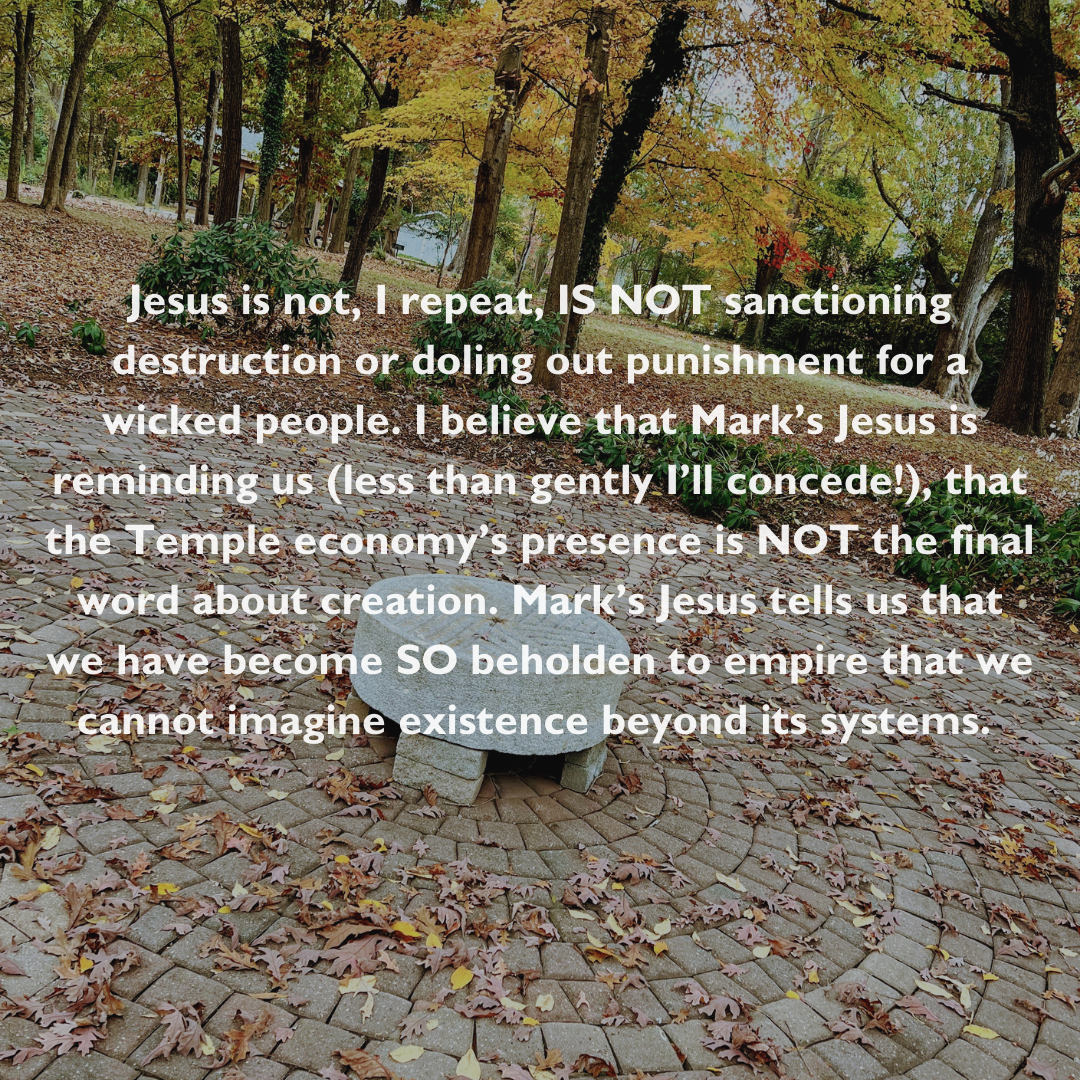
For the Living of These Days
Bob Stillerman
25th Sunday After Pentecost, Proper 28, 11/14/2021
Mark 13:1-8
For the Living of These Days Mark 13.1-8 11-14-2021
In the Spring of 2000, I was part of a student trip with Appalachian State University. We enjoyed a week in New York City. In truth, the trip was significantly more fun and more social than it was educational. But luckily for us, a tour of NASDAQ and the World Trade Center satisfied our curriculum requirements.
I remember standing in the World Trade Center courtyard on a brisk morning, and staring up at two of the tallest, most impressive, and most mind-boggling structures I had ever seen. How could anything be this tall, let alone two things?!? The physical prowess of this complex was memorable enough. And then we saw all the things that happened there; all the people affected by its activities, and even the commodities floor from the movie Trading Places! (I may have an MBA, but I still need refreshers in remembering how Eddie Murphy and Dan Akroyd cornered the frozen concentrated orange juice market). I also remember being so impressed with it all – the buildings, the people, the hustle, and bustle – that I spent $10 to have a Budweiser at the bar on the top floor, the most extravagant purchase I have ever made.
I didn’t meet any prophets that spring day, even when we walked through Central Park. But had someone declared the fate that would befall the Twin Towers a year and half later, I would have stopped in my tracks. How could something with bigness and impact in every imaginable way just crumble, and the world not end right there?
The Jerusalem Temple was as impressive a structure as has ever existed. It dwarfed the Acropolis in Athens and the Forum in Rome, and its foundation stones weighed more than 100 tons. This was the very center of religious, economic, cultural, and social life in Jerusalem.
An unnamed disciple remarks to Jesus, “Wow, teacher, would you get a load of this place? Look at the size of these stones, and the height of these buildings!” And Jesus says, “One day soon, none of this is going to exist – not one stone will be stacked upon the other.”
Yeah, sure Jesus, that would make for a nice blockbuster film! First, Bruce Willis rescues a skyscraper. Next, he emerges from the rubble of a grand temple!
It’s funny, too. Jesus drops this nugget on the disciples in a very subtle way. Just FYI, the Temple’s gonna fall down. And I imagine his followers whispering to each other, “I am sorry, what? Did he just go off script? Did I hear that right?”
The scene ends, and we transition to the Mount of Olives The disciples are sitting on this peak that allows a grand view of the Temple. For comparison, imagine traveling North on Randolph Road, and right when you cross over Wendover you have this clear vantage point of the Uptown Skyline. It’s like you are simultaneously in the city, and set apart from it. Mark’s author creates a similar visual for Jesus and the disciples. The Temple is somehow present in their midst, and yet separate, too.
I think that’s intentional. Even though these disciples are in the presence of Jesus, set apart in one of the most peaceful and quiet mountain peaks you could ever imagine, there’s that Temple occupying their space. I also think Mark’s author is intentional in establishing Jesus, and the presence of God, as being set apart, and representing a superior authority to Temple leadership.
Peter, James, John, and Andrew pull Jesus aside. Like all of us, they want to know the details. Specifically, if this Temple is going to fall, would you please provide us with two answers: when is it gonna happen, and how will we know? We’d all like to be prepared for the end of the world.
Now here’s where this passage gets tricky if we read it in too much of a hurry. Our lection stops at verse eight, but well on after verse eight, Jesus talks about birth-pangs, a series of unfortunate, painful, tough events that reveal the harsher side of human existence. We might call these first-world things if we were thinking back to last week’s passage in Revelation.
Out gut reaction is to say, “Hey Mark’s Jesus, no thanks! We don’t have the time nor the energy to hear you say that we need to endure more war, more pain, more destruction, more blah before things are made right. Because, quite frankly, that doesn’t really square with the love, care, and compassion of the God you so often channel.”
But step back. Please! Jesus is not, I repeat, IS NOT sanctioning destruction or doling out punishment for a wicked people. I believe that Mark’s Jesus is reminding us (less than gently I’ll concede!), that the Temple economy’s presence is NOT the final word about creation. Mark’s Jesus tells us that we have become SO beholden to empire that we cannot imagine existence beyond its systems.
Does creation have longevity beyond the Temple? Of course! Does creation have longevity beyond capitalism? Of course! Does creation have longevity beyond any system or power we can conjure or imagine? Yes, yes, yes, of course!
Jesus tells us that temples and systems will fall. And unfortunately, humanity will have to endure more pain beyond the fall of those systems, because of its insistence to build more systems. This is not pain that is doled out because God decrees it. It’s pain that is doled out and endured, because we keep constructing towers instead of gardens. Creation is intended to be tilled and nurtured, not leveled and abused.
In First Century Palestine, a Temple in ruins represented the apocalypse, the end of the world. I suppose our perceived end has just taken on new forms in the two millennia that have followed: the Crusades, and Pompei, and the Great Wars, and plague, which we now know in more than an historical way. We could add the climate crisis to the list as well. And again, I would tell you, none of these are acts willed by some kind of cosmic clockmaker or magician.
But in each instance, our desire to preserve systems and the privileges they afford, rather than humanity, and indeed creation itself, have resulted in realized pain and suffering. And in the most extreme instances, prophets have seized upon volatility and fear to deem such suffering as the retributive will of God. “Don’t fall for it!” Jesus says.
Be awake. Be present. Be compassionate. Be diligent. Be neighbors. This is just the beginning, friends, but a new one is coming.
Let me finish with one last thought. We cannot control if or when God is coming back. (Or even if God already has for that matter!). That’s just not in our created nature, and frankly, I don’t think it’s a very fruitful pursuit. But here’s what we can control: we can control the kind of creation and the kind of systems we choose to participate in.
I believe we can offer first aid to our neighbors without slinging AR15s on our shoulders. I believe we can be generous, sharing our abundance with our neighbors, and still have more than enough. I believe we can choose to forgo conveniences that harm the natural world in order preserve a world for our children. I believe we can create spaces that honor every expression and representation of humanity rather fortifying altars of homogenization. I believe we can choose to collaborate rather than dominate, love rather than hate, build up rather than tear down, create rather than replicate. But most of all, I believe we can gather on our own Mount of Olives, in the presence of God and one another, and not live in the overwhelming shadow of Temple.
I believe that when we choose to live as God’s people, among God’s people, expressing, giving and accepting our varied gifts in community, we actually do become God’s people. We stop worrying about how this world is gonna end, and we pay much, much, much more attention to how we can start living in God’s world today.
I see God’s people. I feel God’s presence. May our living for today begin today. Amen.
Recent Sermons
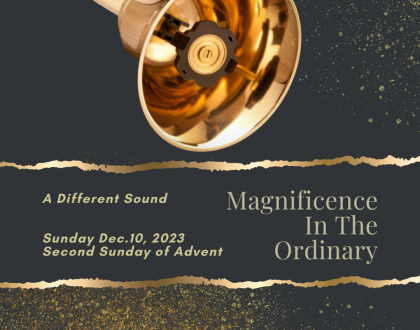
A Different Sound
December 14, 2023
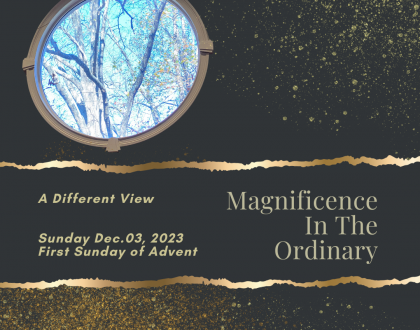
A Different View
December 04, 2023
Who Will Be Your Angel? Whose Angel Will You Be?
November 14, 2023
